
Maurits Cornelis Escher: Master of Graphic Art and “Impossible” Perspectives
Maurits Cornelis Escher (1898-1972), a Dutch graphic artist renowned for his meticulously detailed prints and drawings, has captivated audiences with his exploration of mathematical concepts and impossible perspectives. Escher’s work transcends conventional boundaries between art and science, making him a unique and enduring figure in the art world. His fascination with tessellation, infinity, and spatial paradoxes has resulted in a body of work that challenges viewers’ perceptions and invites them into a world where the impossible becomes visually tangible.
Early Influences and Artistic Development
Born in Leeuwarden, Netherlands, Escher showed an early interest in drawing and design. Despite initially studying architecture at the Haarlem School of Architecture and Decorative Arts, he soon switched to graphic arts under the guidance of Samuel Jessurun de Mesquita, a noted artist and graphic designer. This decision proved pivotal, as it allowed Escher to hone his skills in woodcut, lithography, and mezzotint, techniques that would become his signature mediums.
Escher’s travels to Italy and Spain in the 1920s and 1930s played a crucial role in shaping his artistic vision. The intricate patterns of Moorish architecture in the Alhambra and the surreal landscapes of Italy deeply influenced his work. These experiences ignited his interest in the geometric principles underlying natural and man-made forms, leading to his lifelong exploration of symmetry, perspective, and tessellation.

Tessellations and Geometric Exploration
Escher’s graphic works are characterized by their rigorous exploration of tessellation, the tiling of a plane using one or more geometric shapes without overlaps or gaps. His early works, such as “Development I” (1937) and “Day and Night” (1938), demonstrate his ability to transform simple geometric patterns into complex, interlocking forms. These pieces reveal Escher’s meticulous attention to detail and his fascination with the interplay of form and space.
In works like “Metamorphosis II” (1939-1940) and “Cycle” (1938), Escher pushes the boundaries of tessellation, creating fluid transitions between geometric shapes and recognizable figures. These prints illustrate his skill in manipulating visual perception, seamlessly blending the abstract with the representational. Escher’s tessellations often feature animals, plants, and human figures, reflecting his belief that art should be rooted in the natural world while transcending its limitations through creative imagination.
Impossible Perspectives and Spatial Paradoxes
Escher’s exploration of impossible perspectives and spatial paradoxes is perhaps his most celebrated contribution to graphic art. Works such as “Relativity” (1953), “Ascending and Descending” (1960), and “Waterfall” (1961) showcase his mastery of optical illusion and his ability to create images that defy the laws of physics. These prints depict architectural structures that loop and twist in ways that are logically inconsistent yet visually plausible, compelling viewers to question their understanding of space and reality.
In “Relativity,” Escher presents a world where multiple planes of gravity coexist, allowing figures to move in seemingly impossible directions. The composition’s complex interplay of staircases and walkways challenges the viewer’s perception of up and down, creating a disorienting yet mesmerizing effect. Similarly, “Ascending and Descending” features a never-ending staircase, a perfect example of a Penrose stair, where monks perpetually climb and descend without ever reaching a higher or lower level.
“Waterfall” epitomizes Escher’s fascination with perpetual motion and the paradox of an impossible object. The water appears to flow uphill before cascading down a waterfall, an illusion created by the precise arrangement of geometric shapes and perspective lines. This print exemplifies Escher’s genius in manipulating perspective to create a visual conundrum, where the eye is deceived but the mind is intrigued.
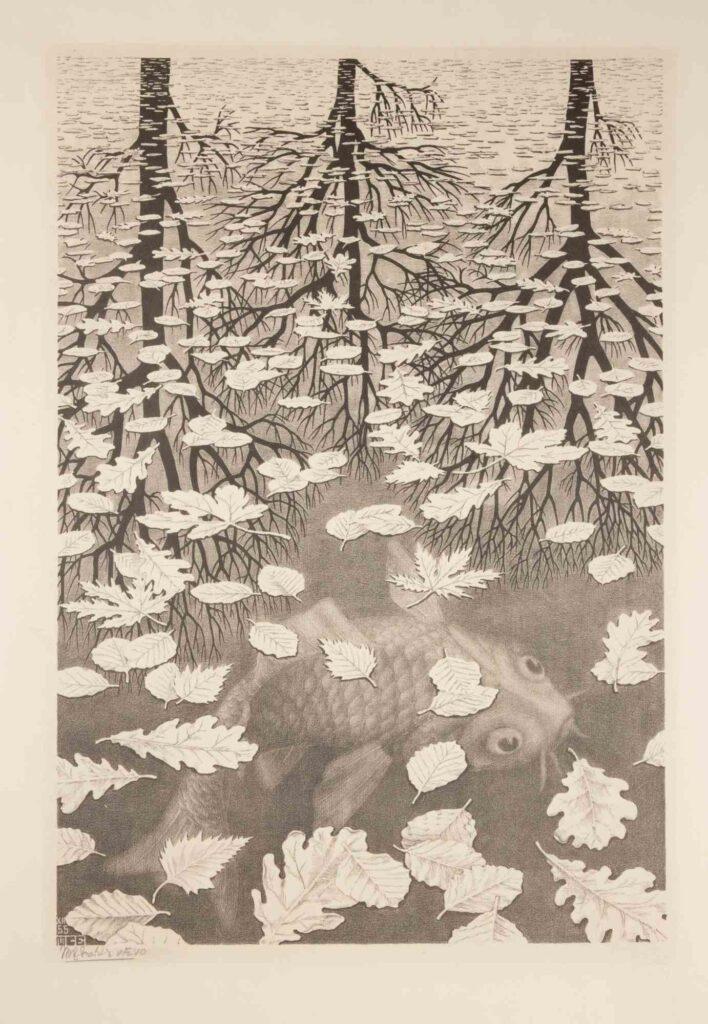
Mathematical Influence and Legacy
Escher’s work is deeply intertwined with mathematical principles, though he was not formally trained as a mathematician. His friendship with mathematician H.S.M. Coxeter and his exposure to the works of mathematicians like George Pólya and Roger Penrose influenced his approach to art. Escher’s ability to visualize complex mathematical concepts and render them artistically has made his work a subject of interest not only in art circles but also in mathematical and scientific communities.
Escher’s legacy extends far beyond his lifetime. His work has inspired a wide range of fields, from architecture and design to computer science and theoretical physics. The paradoxes and optical illusions that define his prints continue to challenge and inspire new generations of artists and thinkers.
Conclusion
Maurits Cornelis Escher’s graphic works and impossible perspectives stand as a testament to his unparalleled creativity and intellectual curiosity. His ability to bridge the gap between art and mathematics has left an indelible mark on both fields, inviting viewers to explore the boundaries of perception and reality. Escher’s prints, with their meticulous detail and mind-bending illusions, remain a powerful reminder of the endless possibilities that arise when art and science intersect. Through his visionary work, Escher has not only expanded the realm of graphic art but also enriched our understanding of the intricate and often paradoxical nature of the world around us.
Related artworks
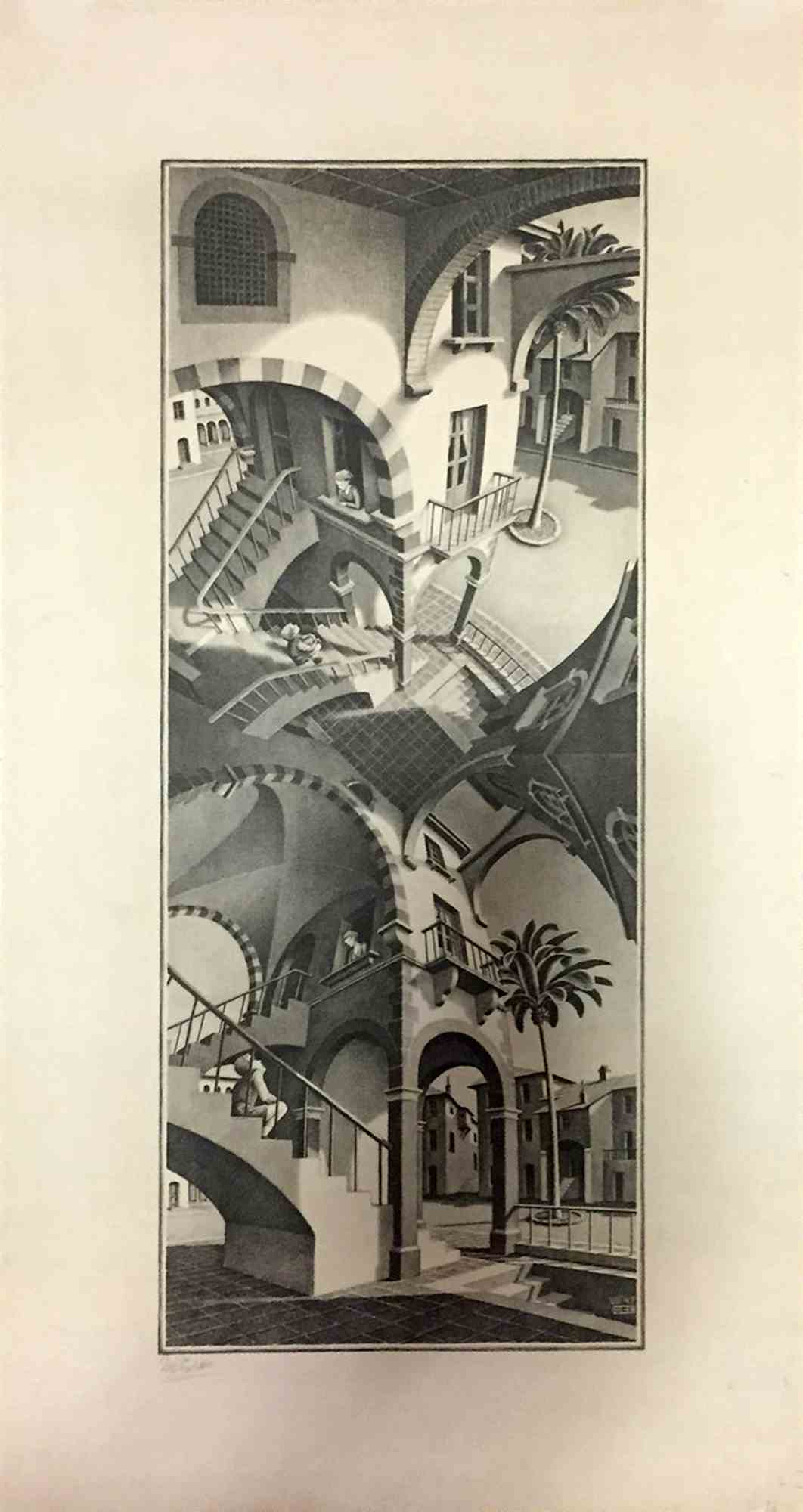
Up And Down
Maurits Cornelis Escher
Lithograph
37500€
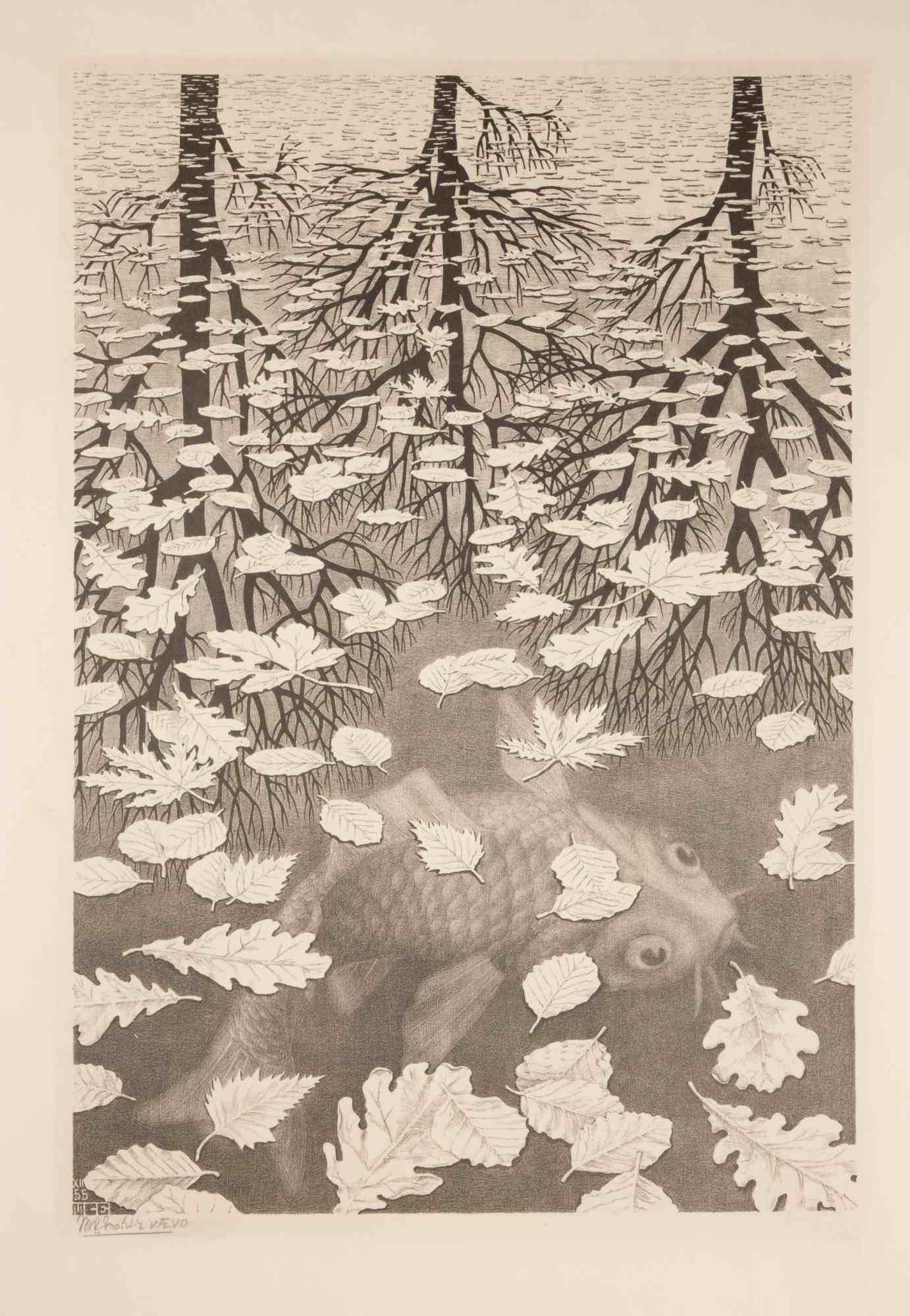
Three Worlds
Maurits Cornelis Escher
Lithograph
42000€
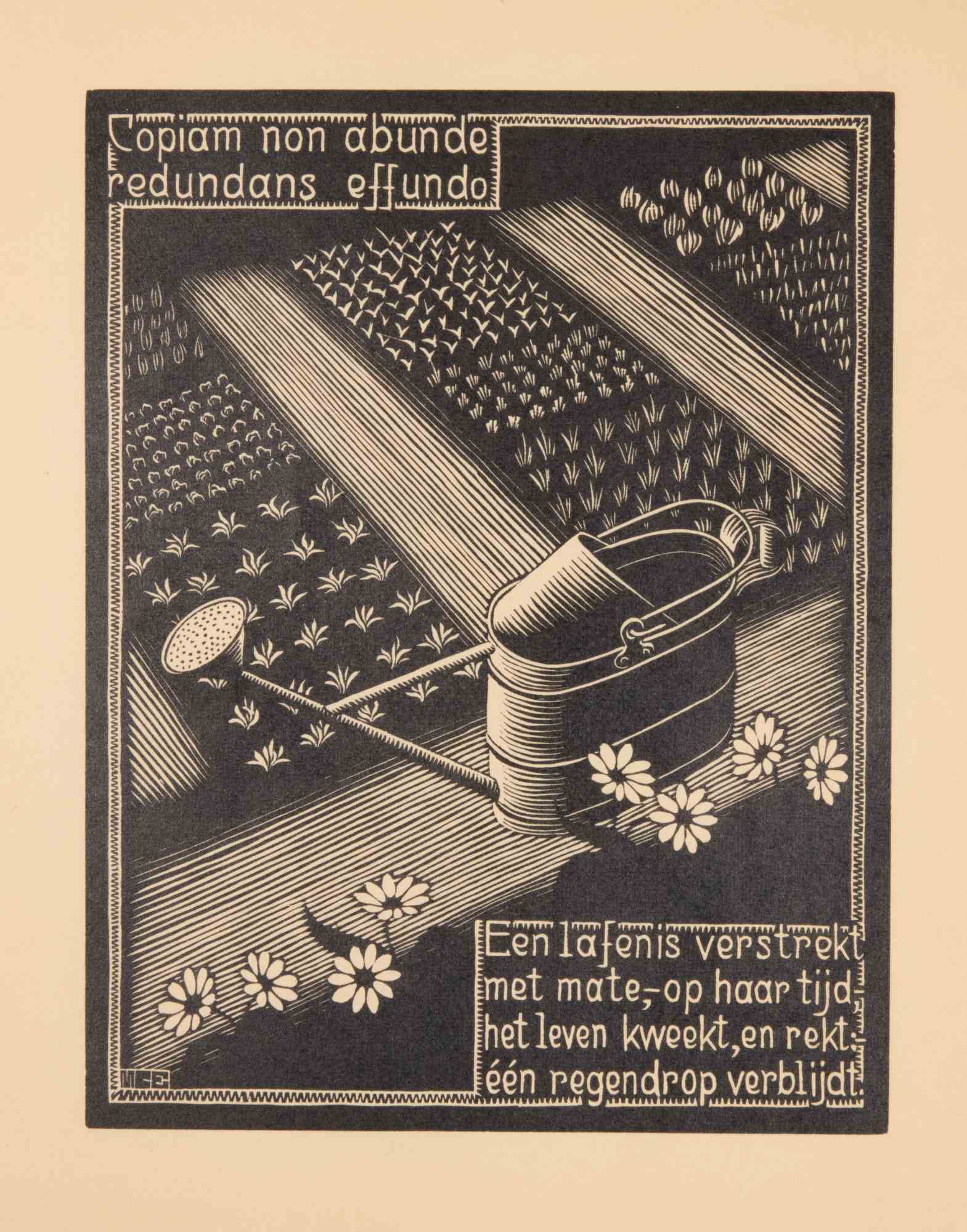
Watering Can
Maurits Cornelis Escher
Woodcut
2800€
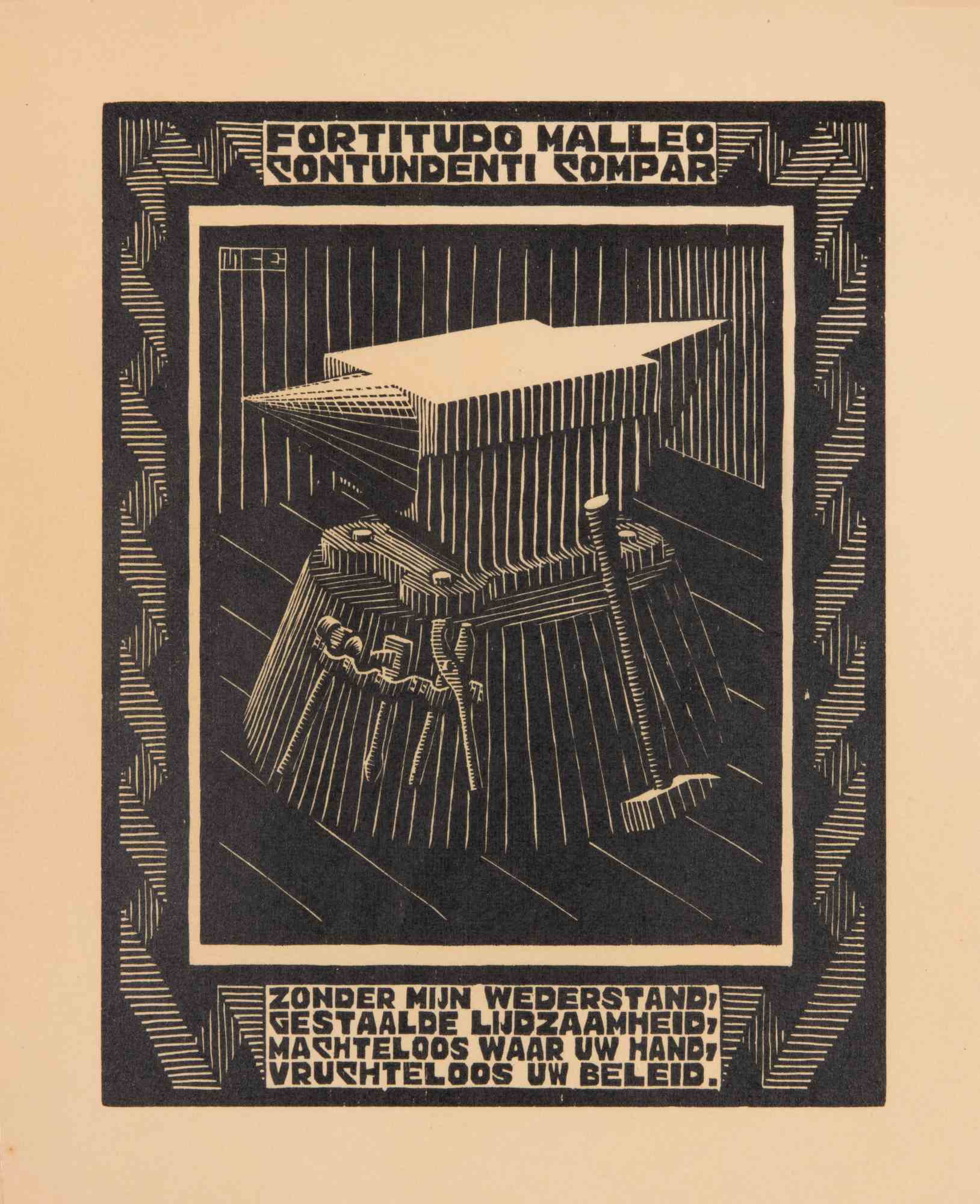
Anvil
Maurits Cornelis Escher
Woodcut
2800€
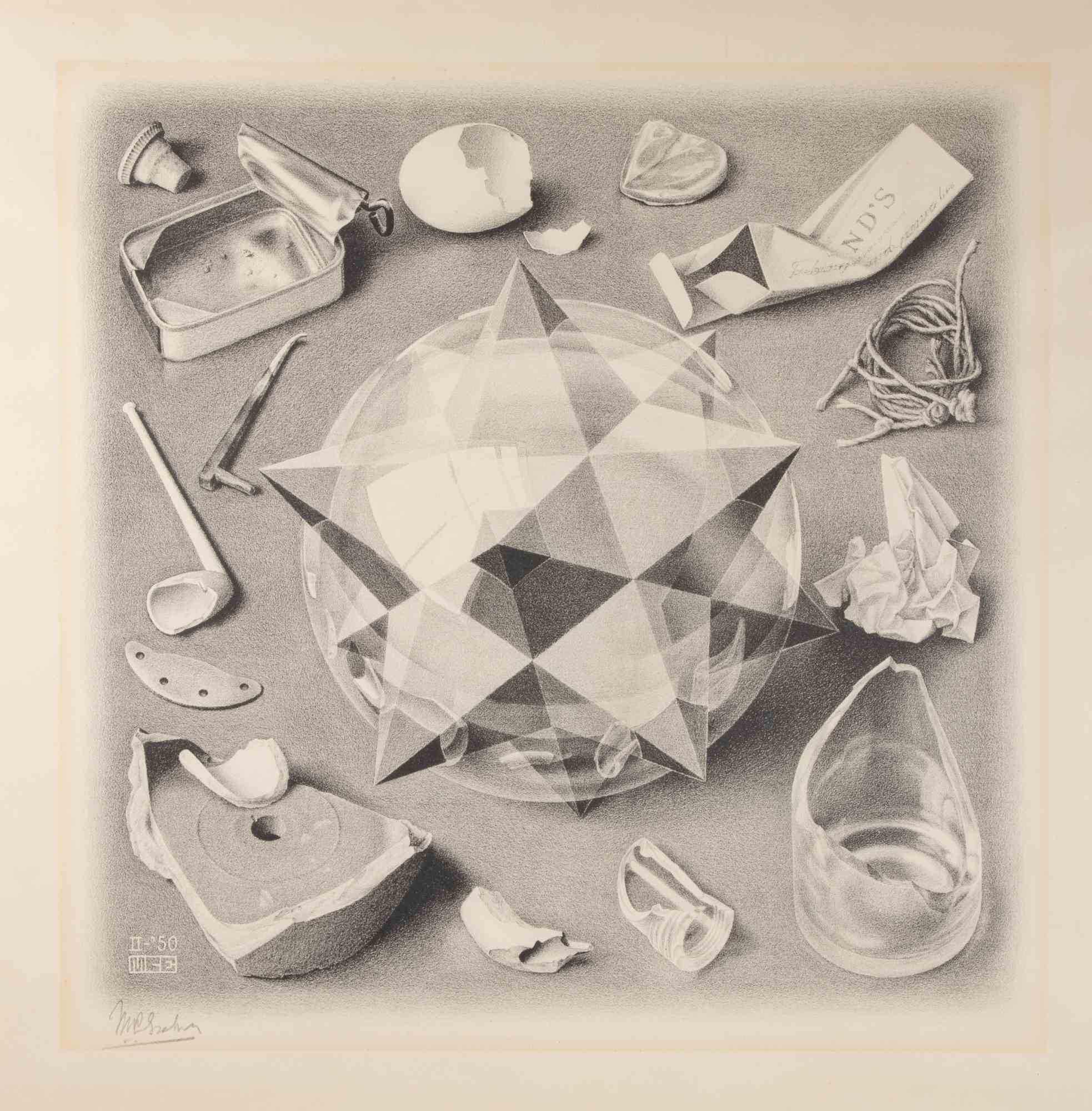
Order and Chaos
Maurits Cornelis Escher
Lithograph
58000€
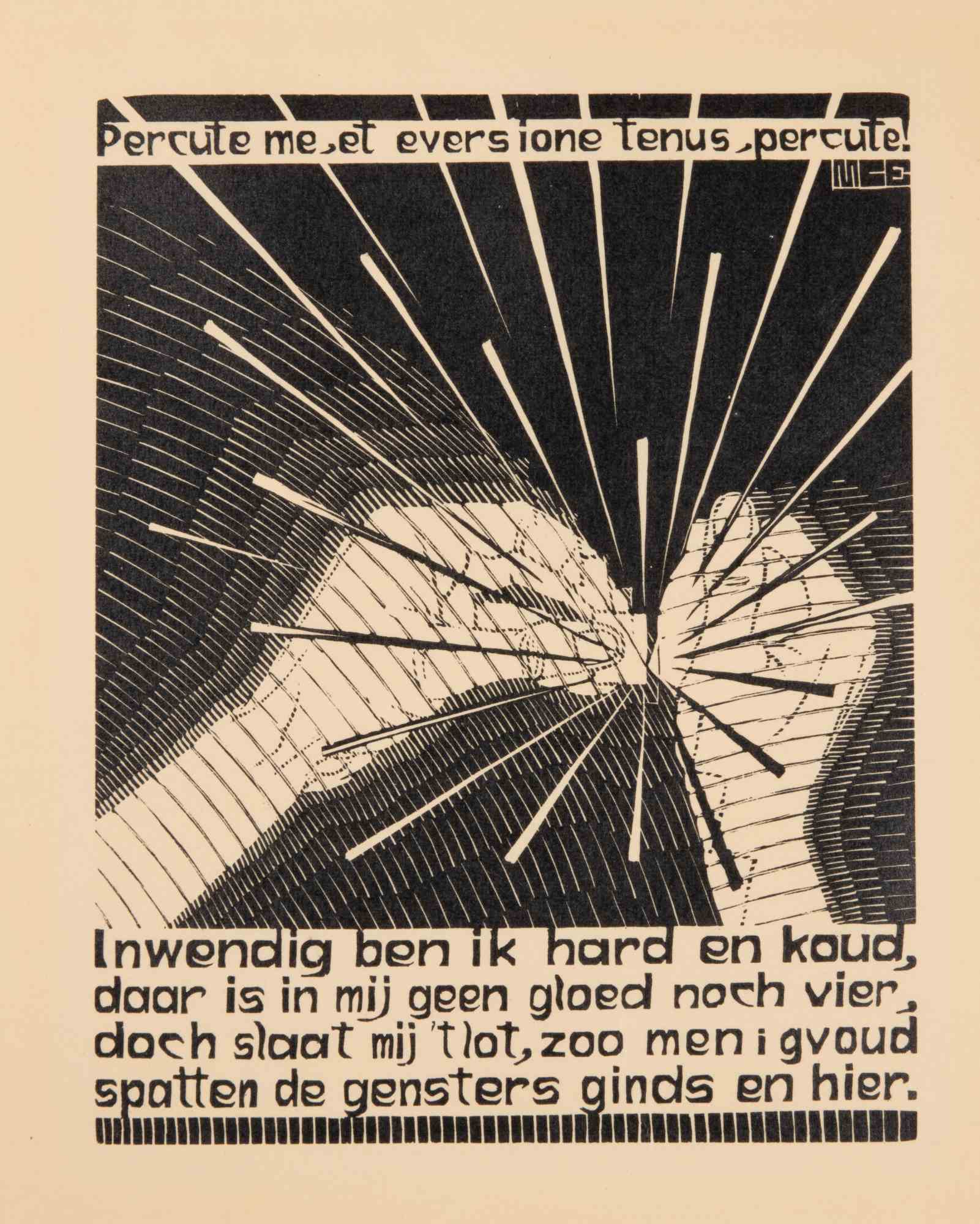
Flint
Maurits Cornelis Escher
Woodcut
2800€
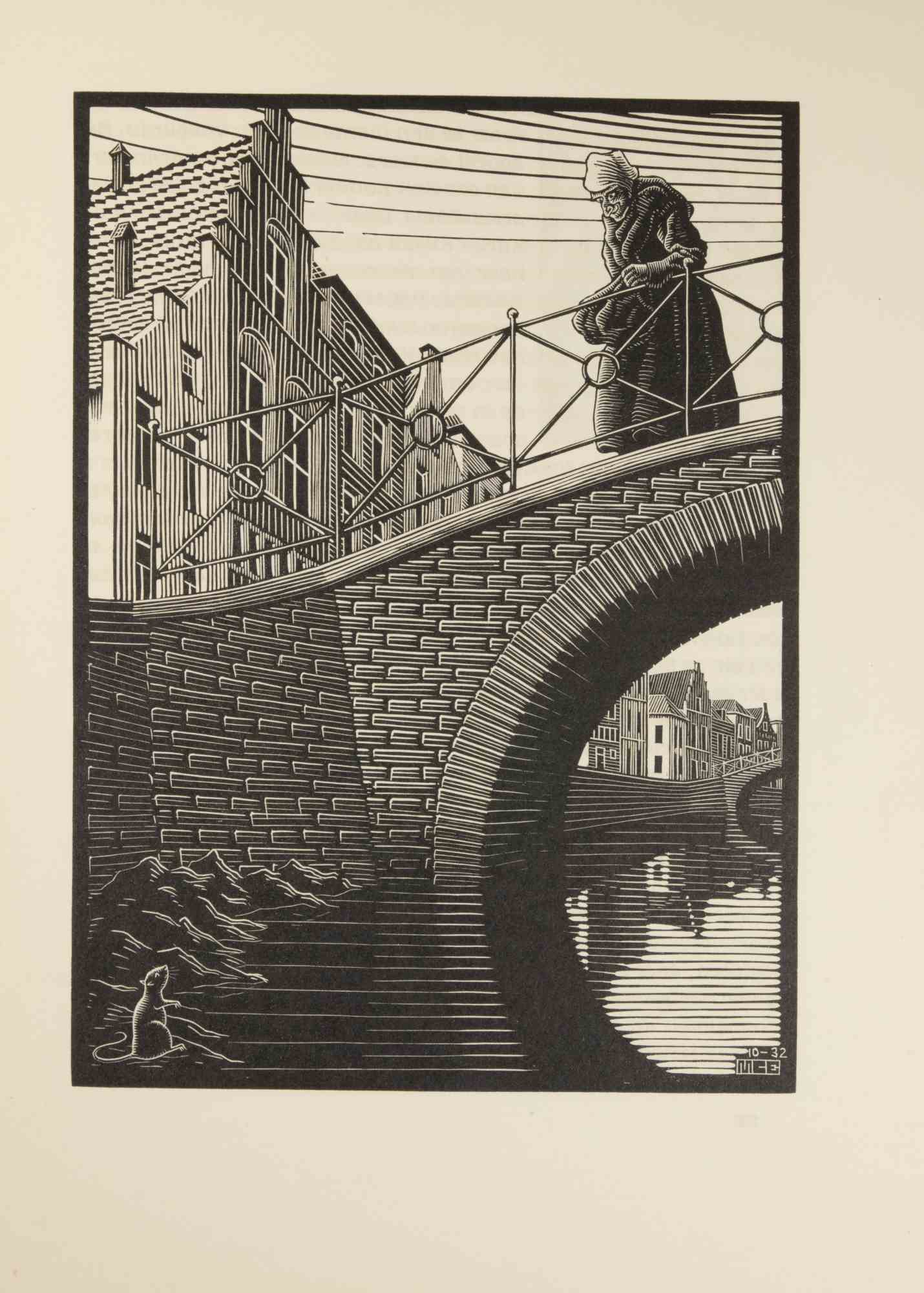
The Bridge
Maurits Cornelis Escher
Woodcut
3400€
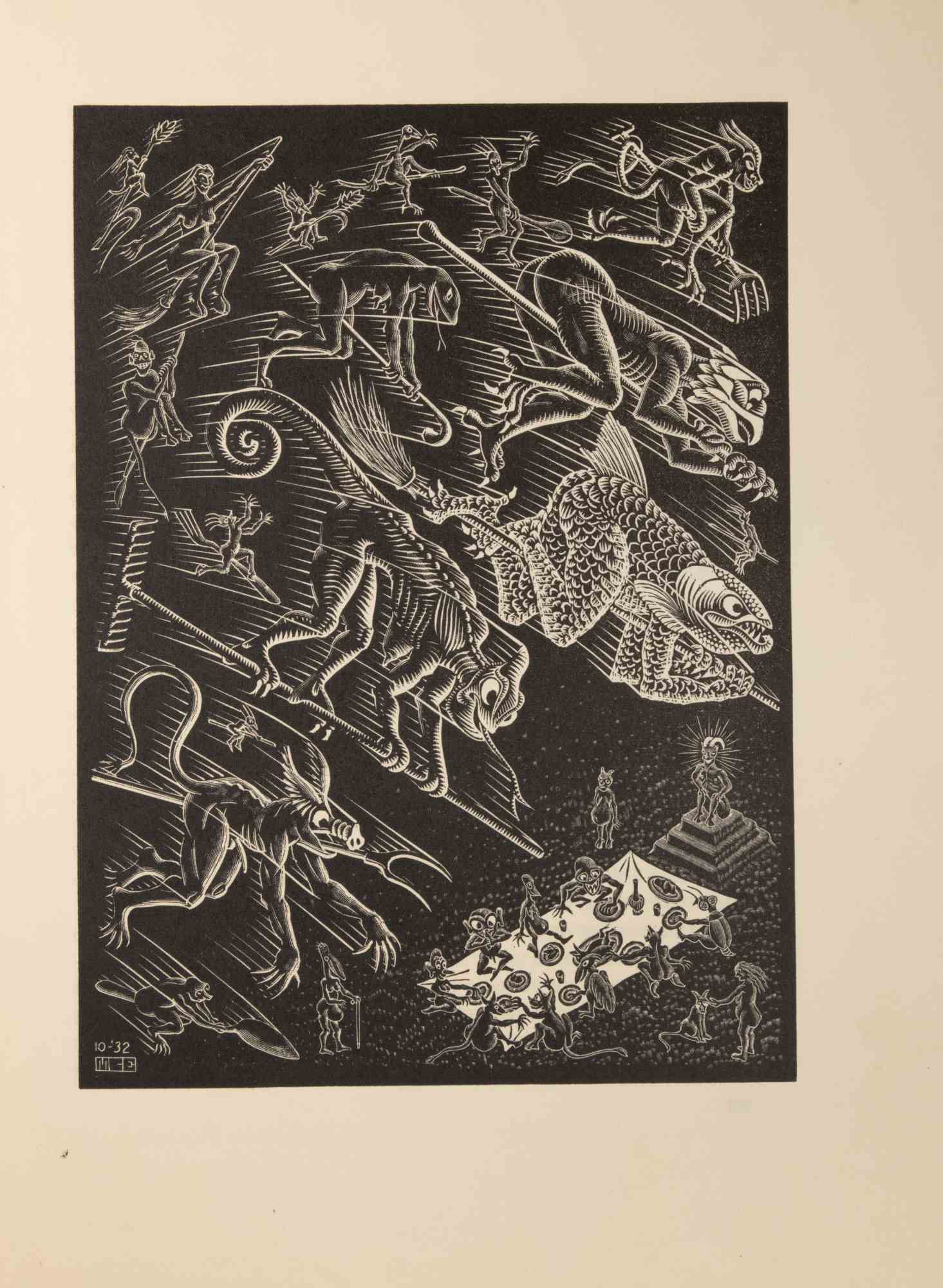
Flying Demons
Maurits Cornelis Escher
Woodcut
3600€
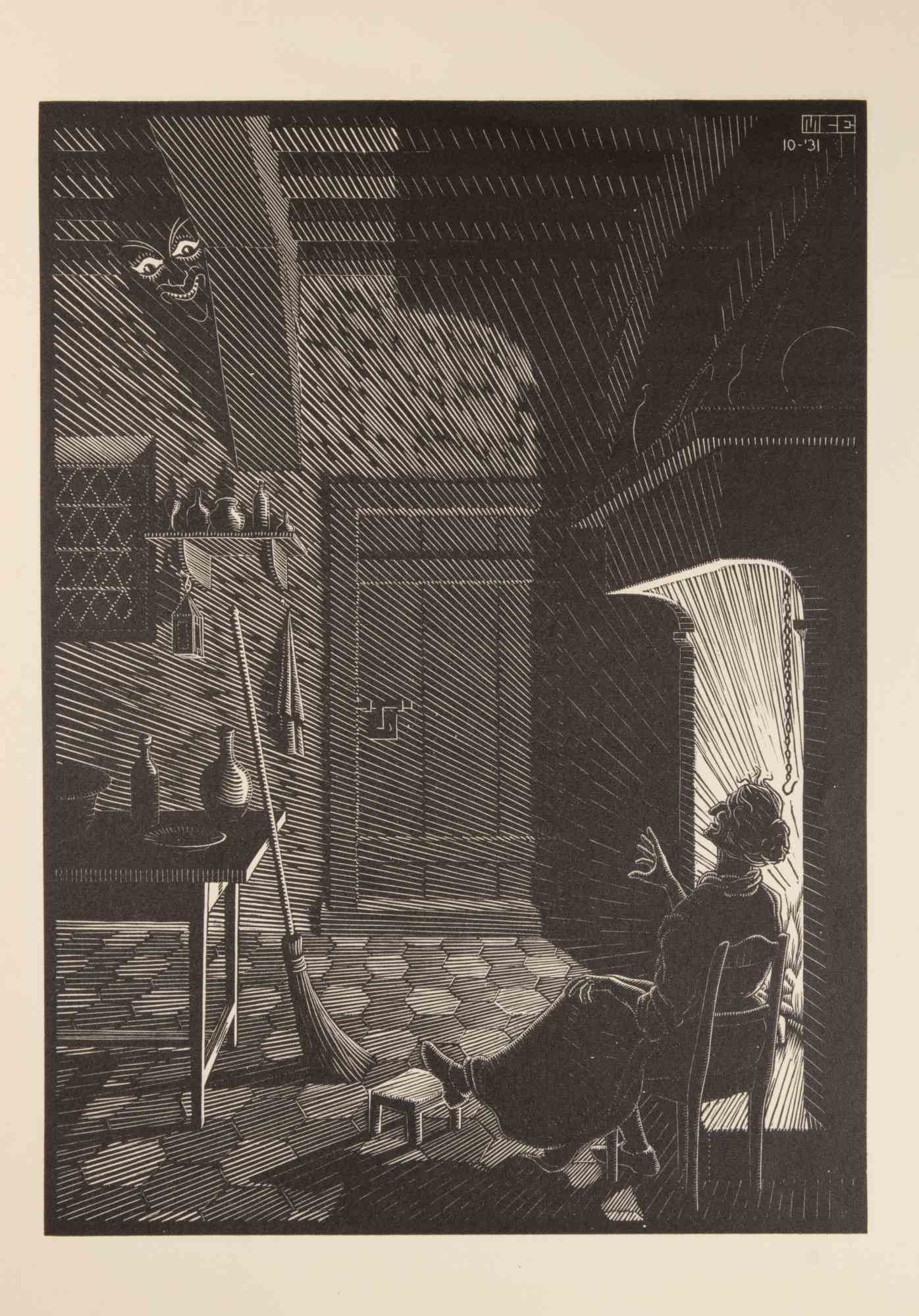
Poltergeist
Maurits Cornelis Escher
Woodcut
3600€
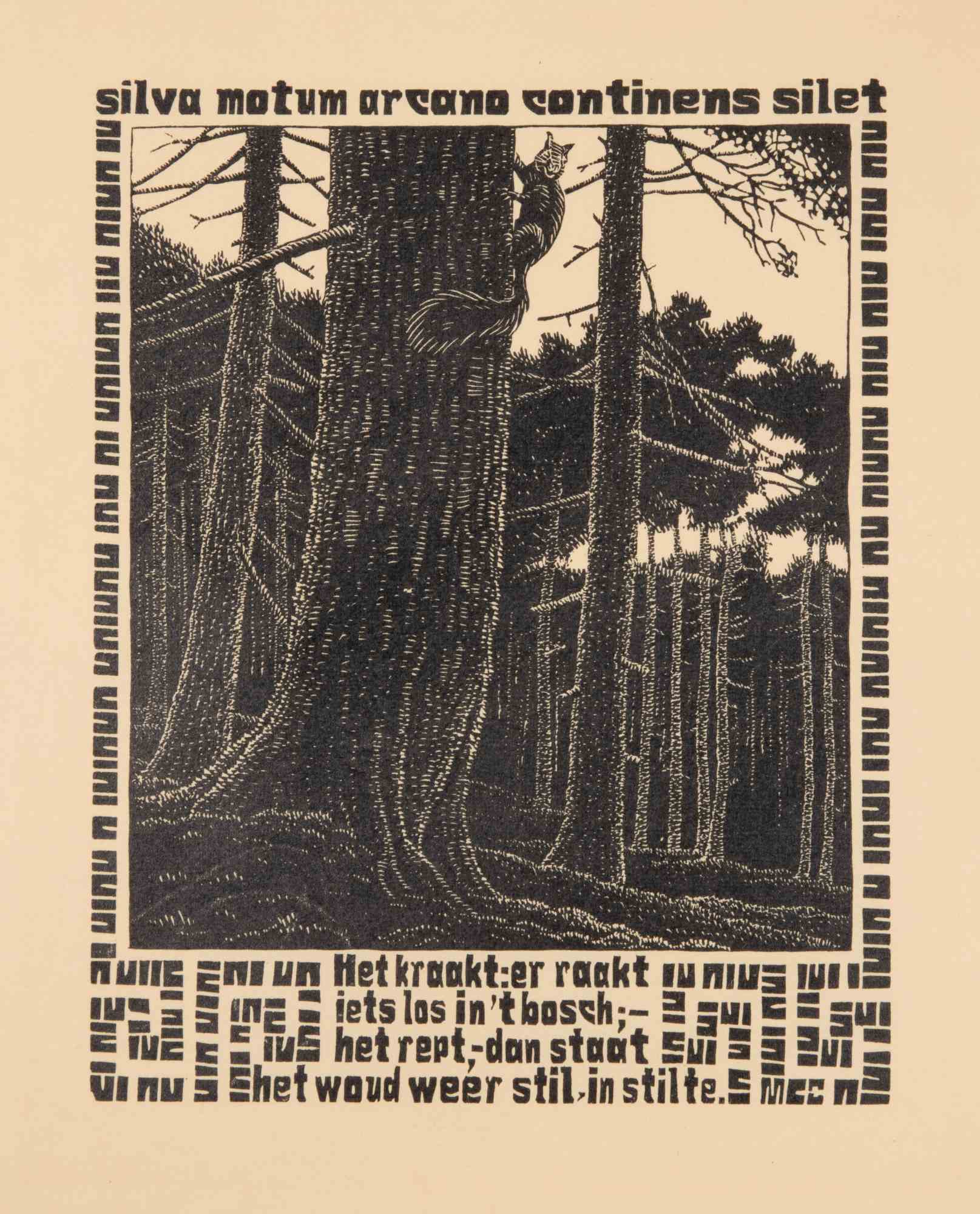
Squirrel
Maurits Cornelis Escher
Woodcut
2800€
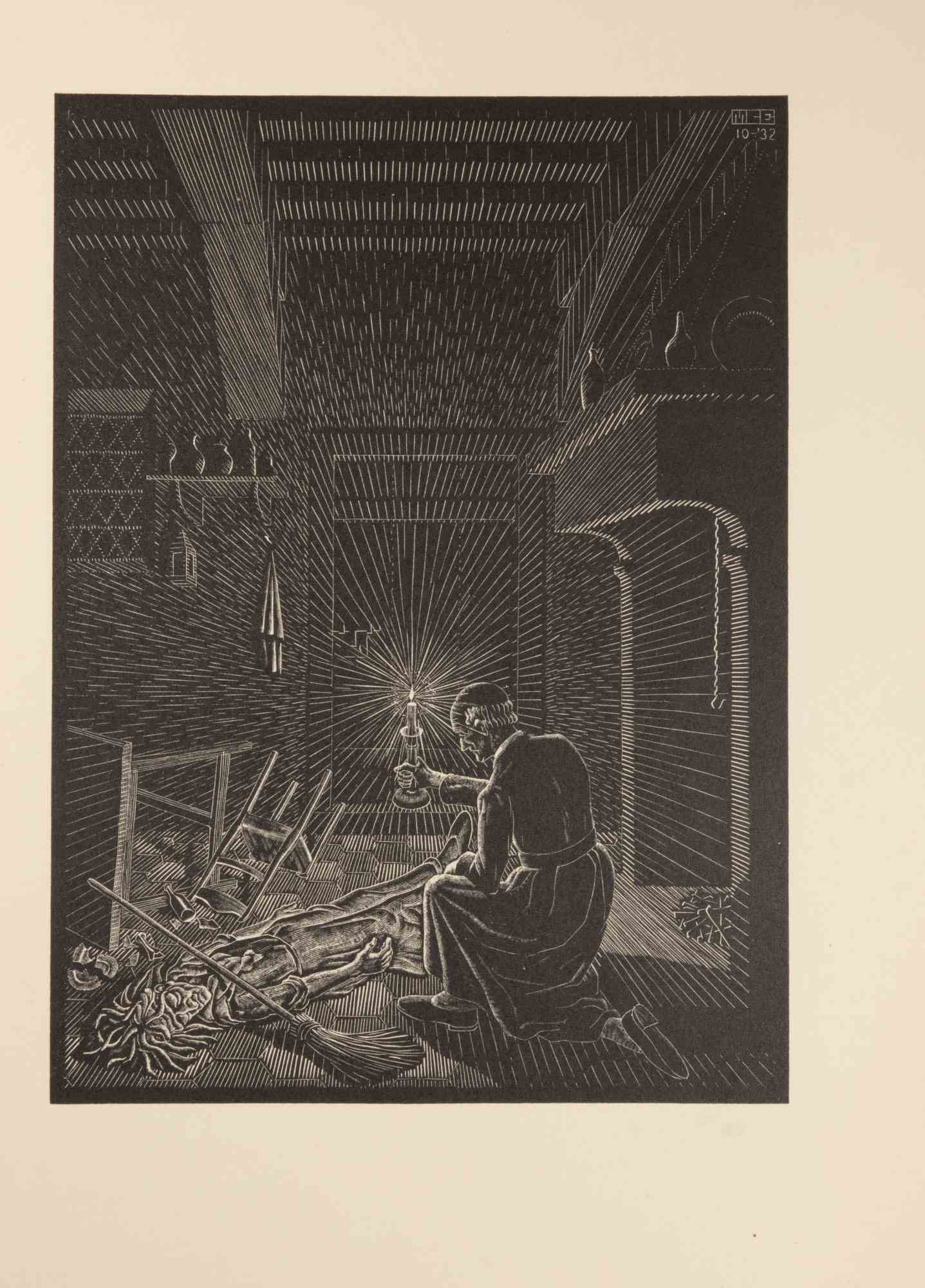
Bad Dream
Maurits Cornelis Escher
Woodcut
3400€
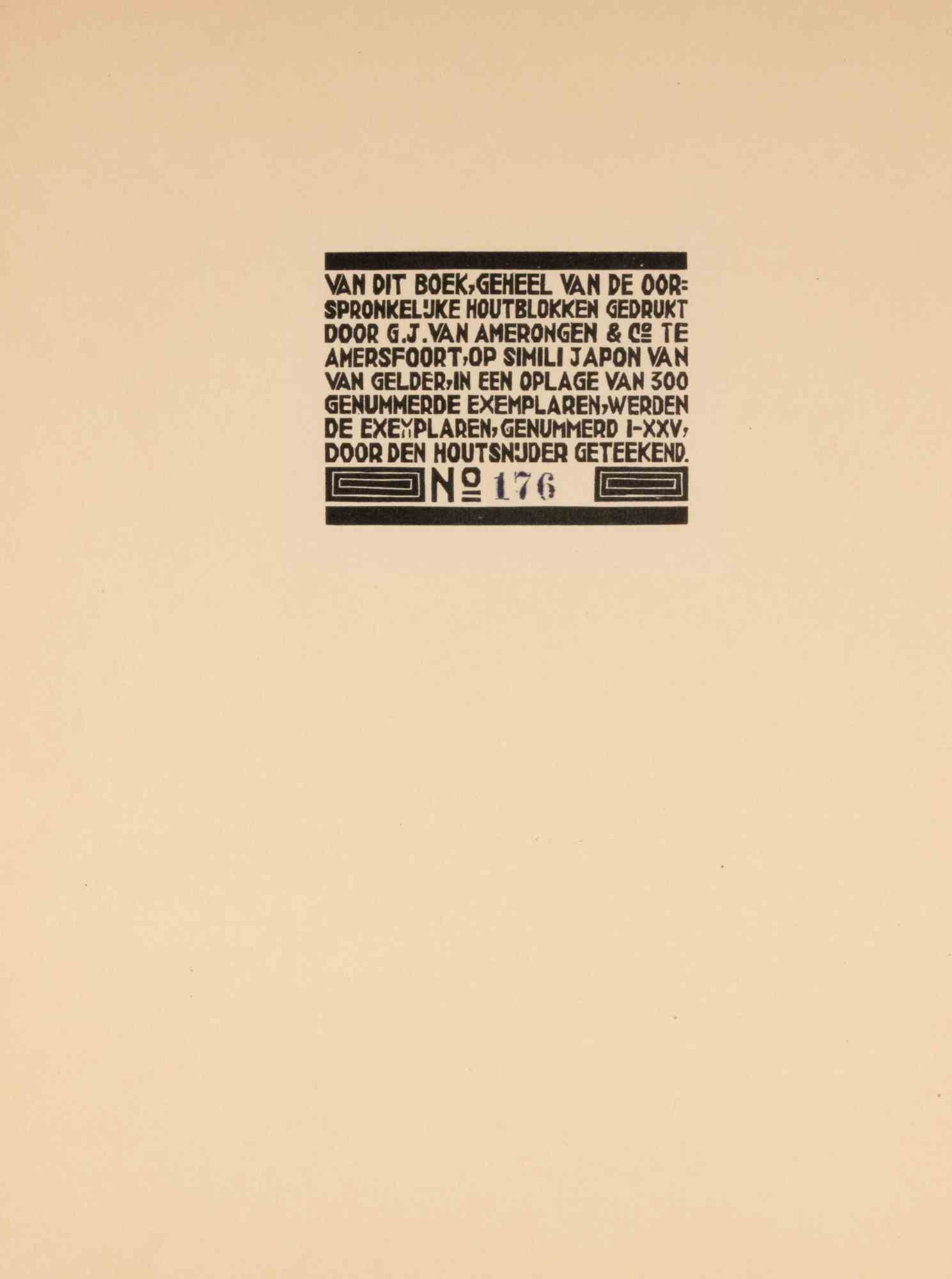
Colophon
Maurits Cornelis Escher
Woodcut
1500€
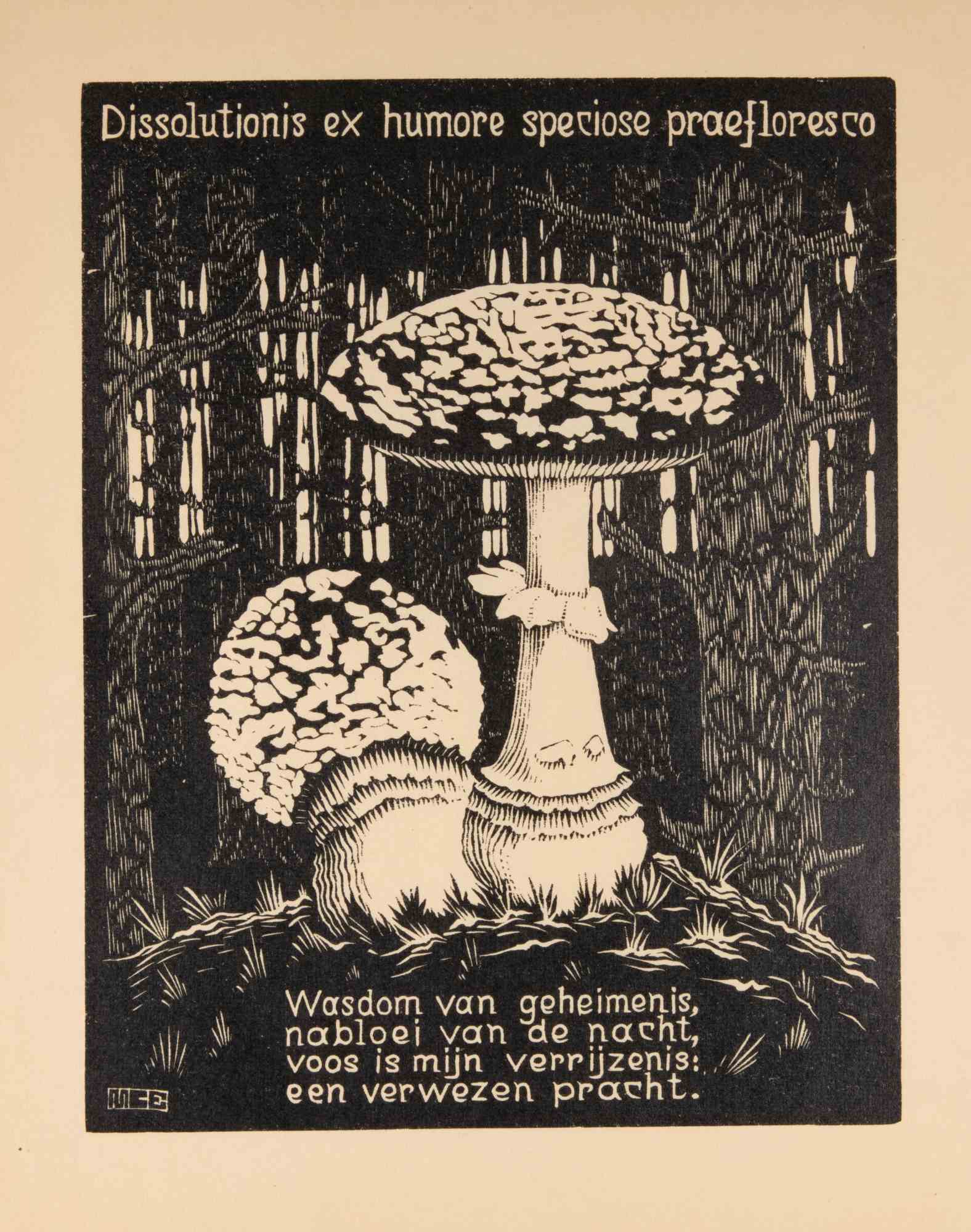
Toadstool
Maurits Cornelis Escher
Woodcut
2400€
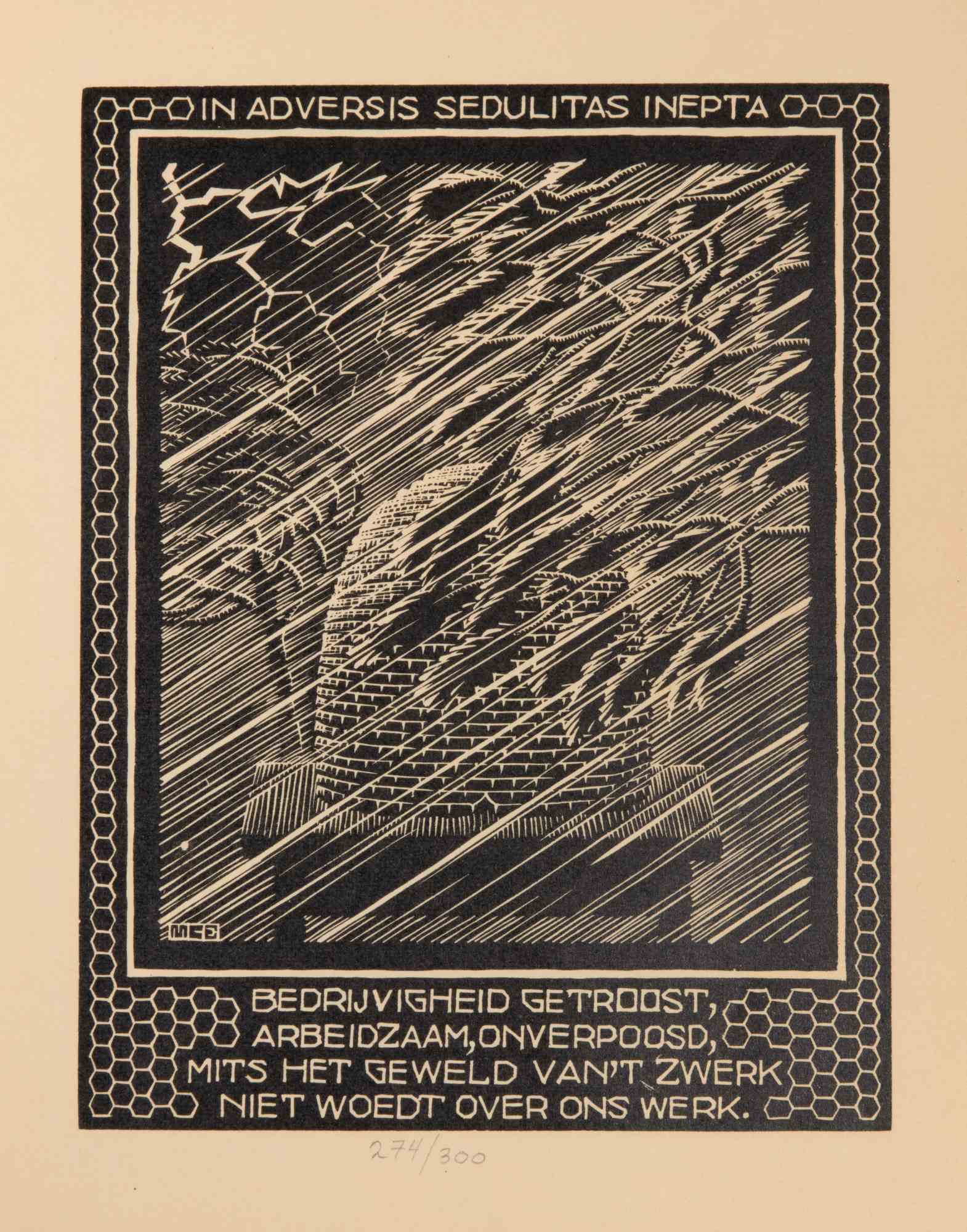
Beehive
Maurits Cornelis Escher
Woodcut
2800€
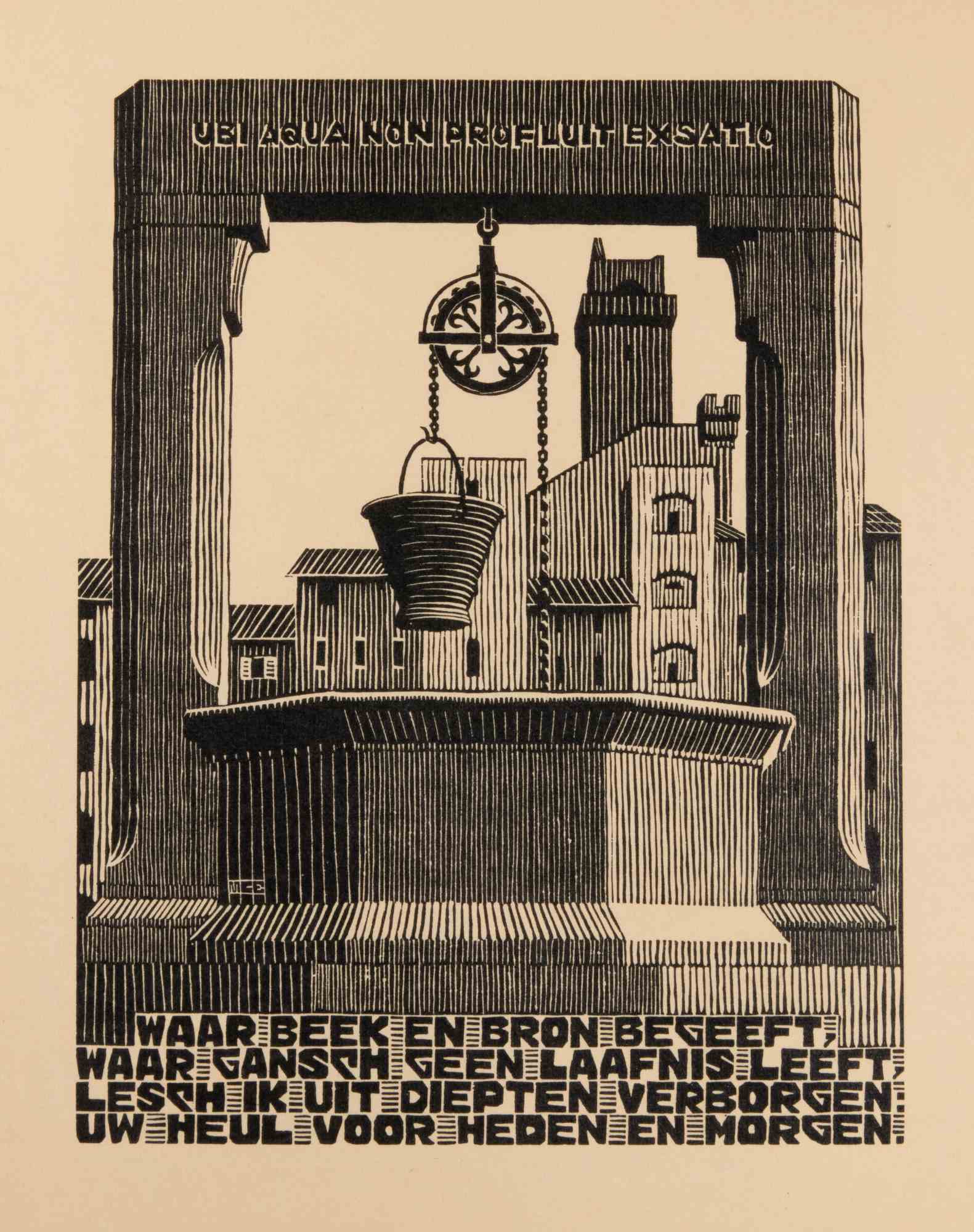
Well
Maurits Cornelis Escher
Woodcut
2800€
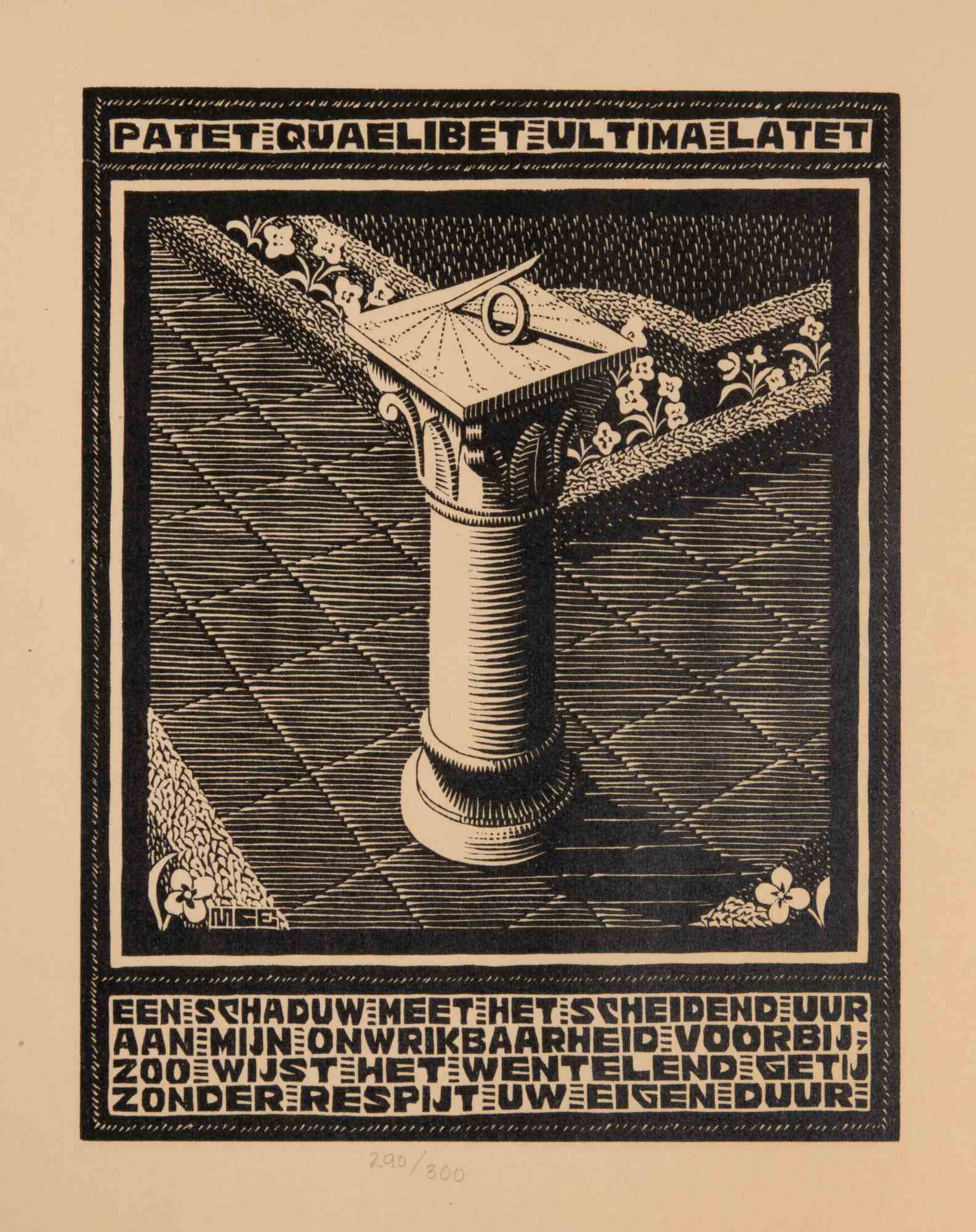
Sundial
Maurits Cornelis Escher
Woodcut
2800€
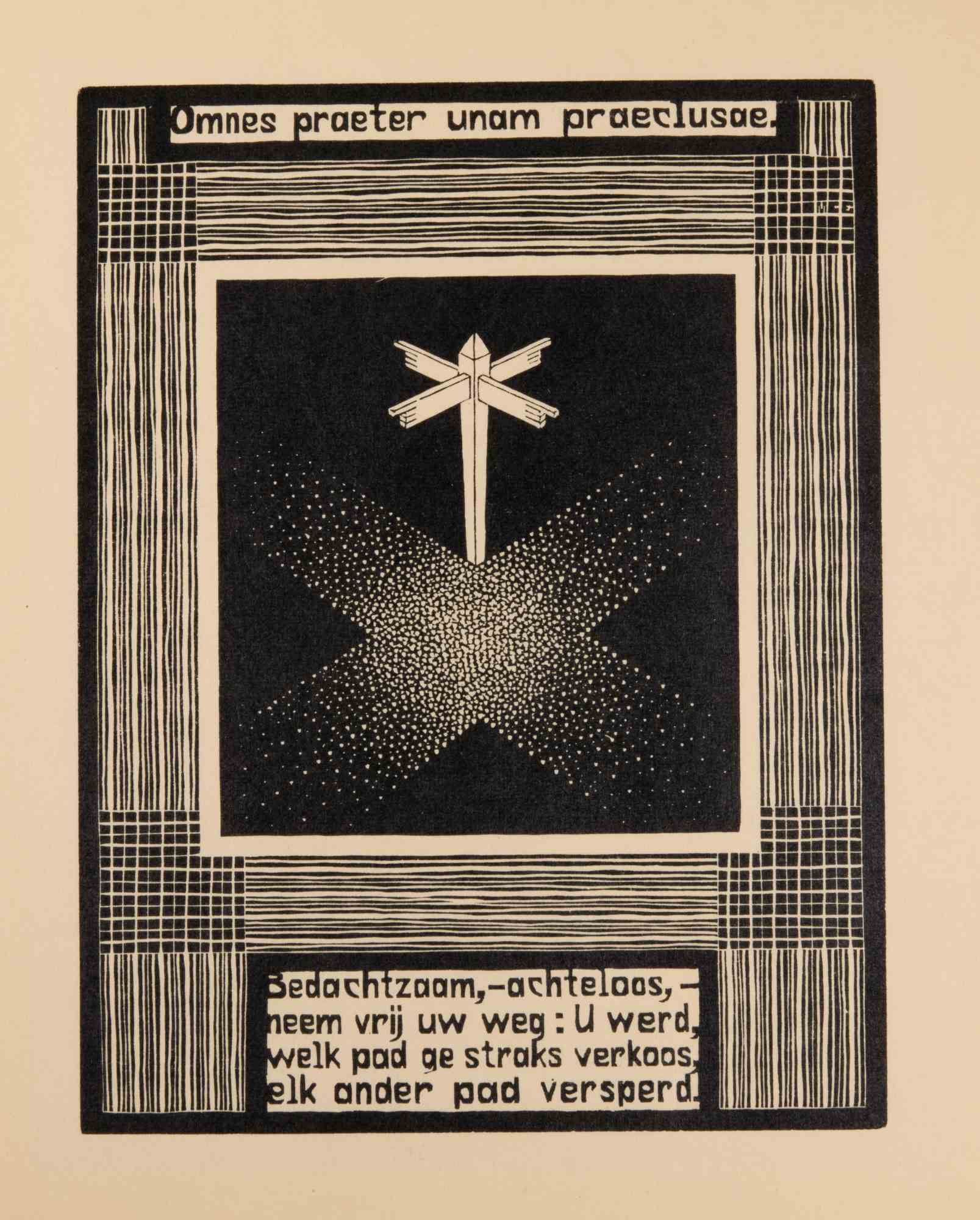
Signpost
Maurits Cornelis Escher
Woodcut
2800€
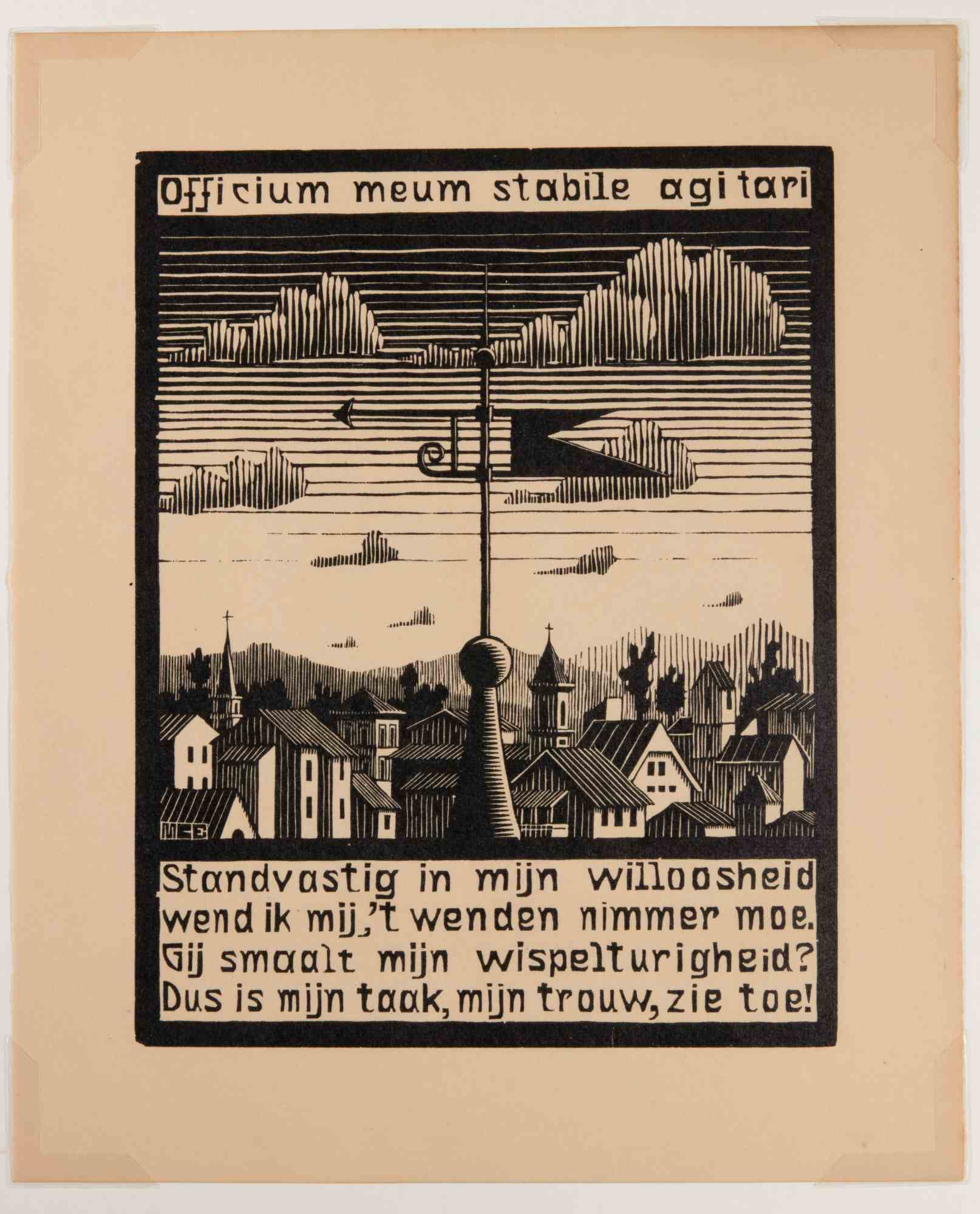
Weather Vane
Maurits Cornelis Escher
Woodcut
2800€
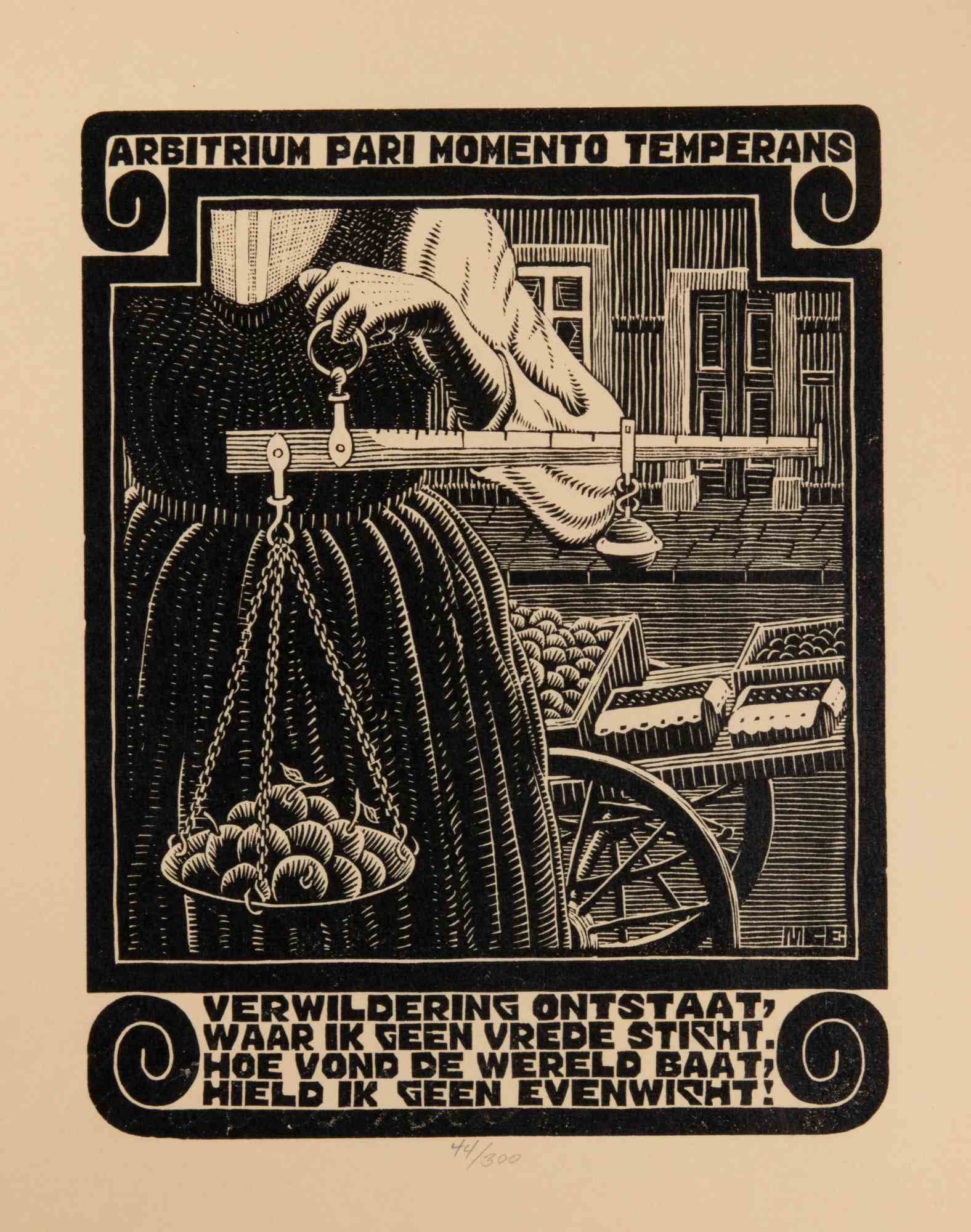
Balance
Maurits Cornelis Escher
Woodcut
2800€
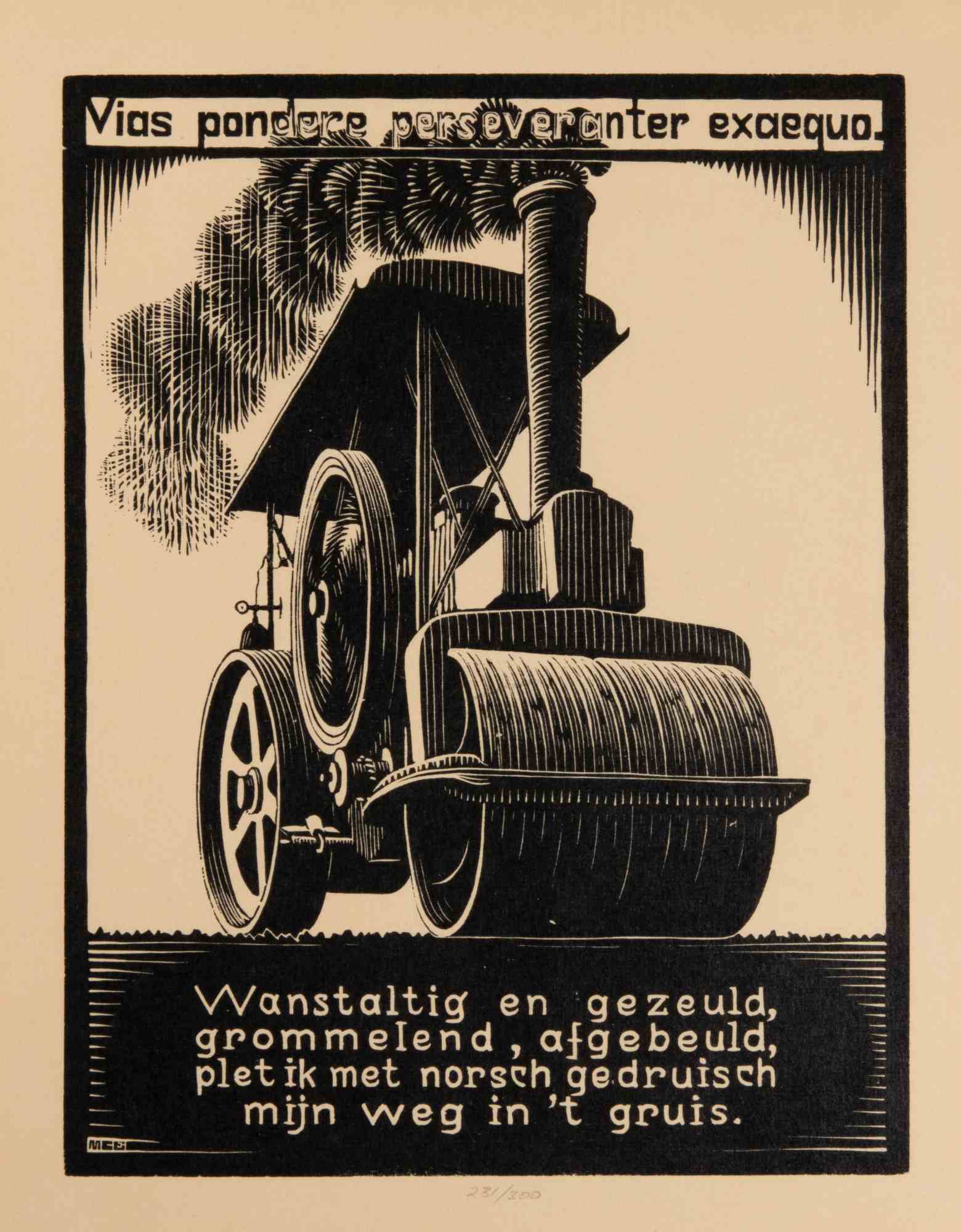
Steamroller
Maurits Cornelis Escher
Woodcut
2800€
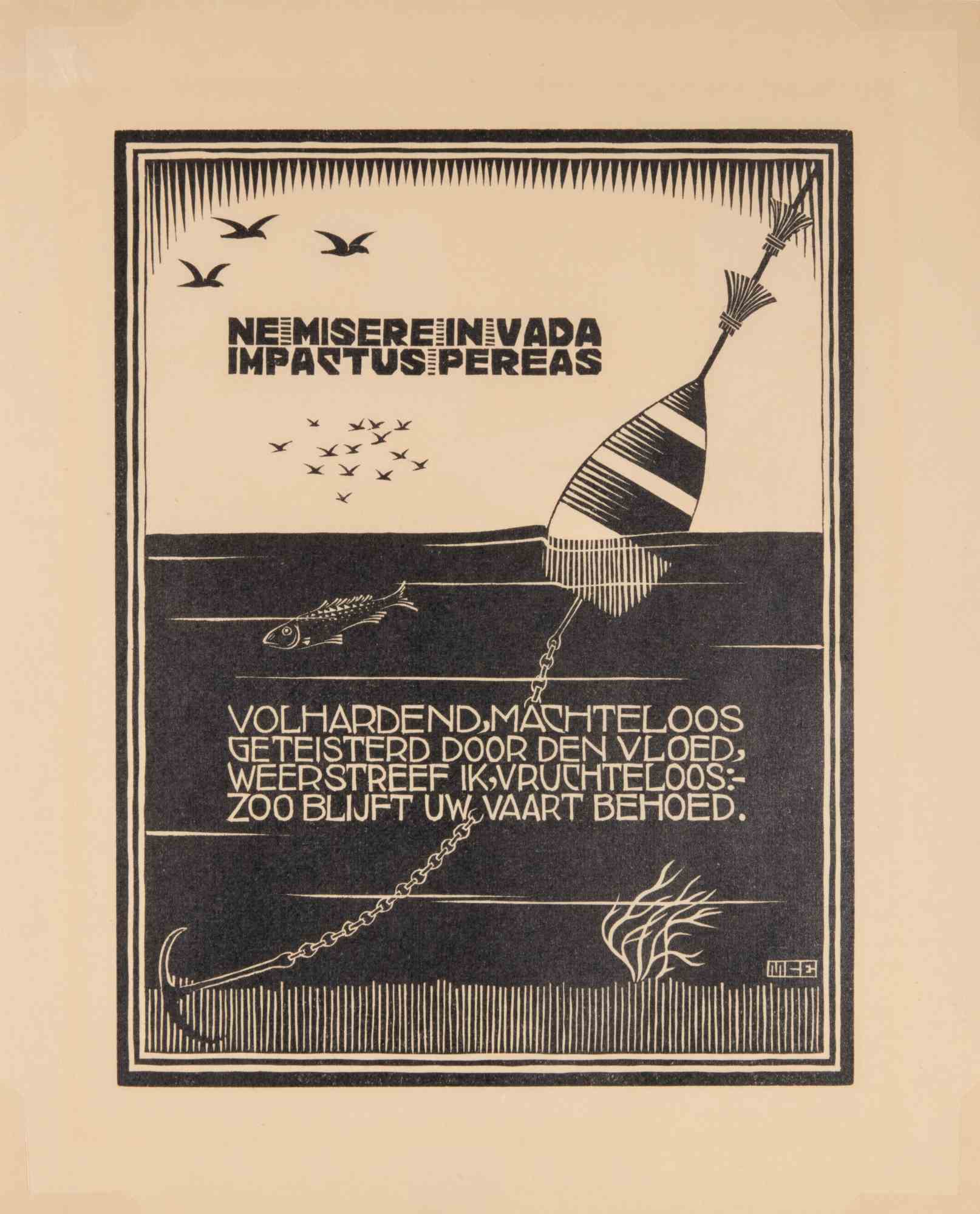
Buoy
Maurits Cornelis Escher
Woodcut
2800€
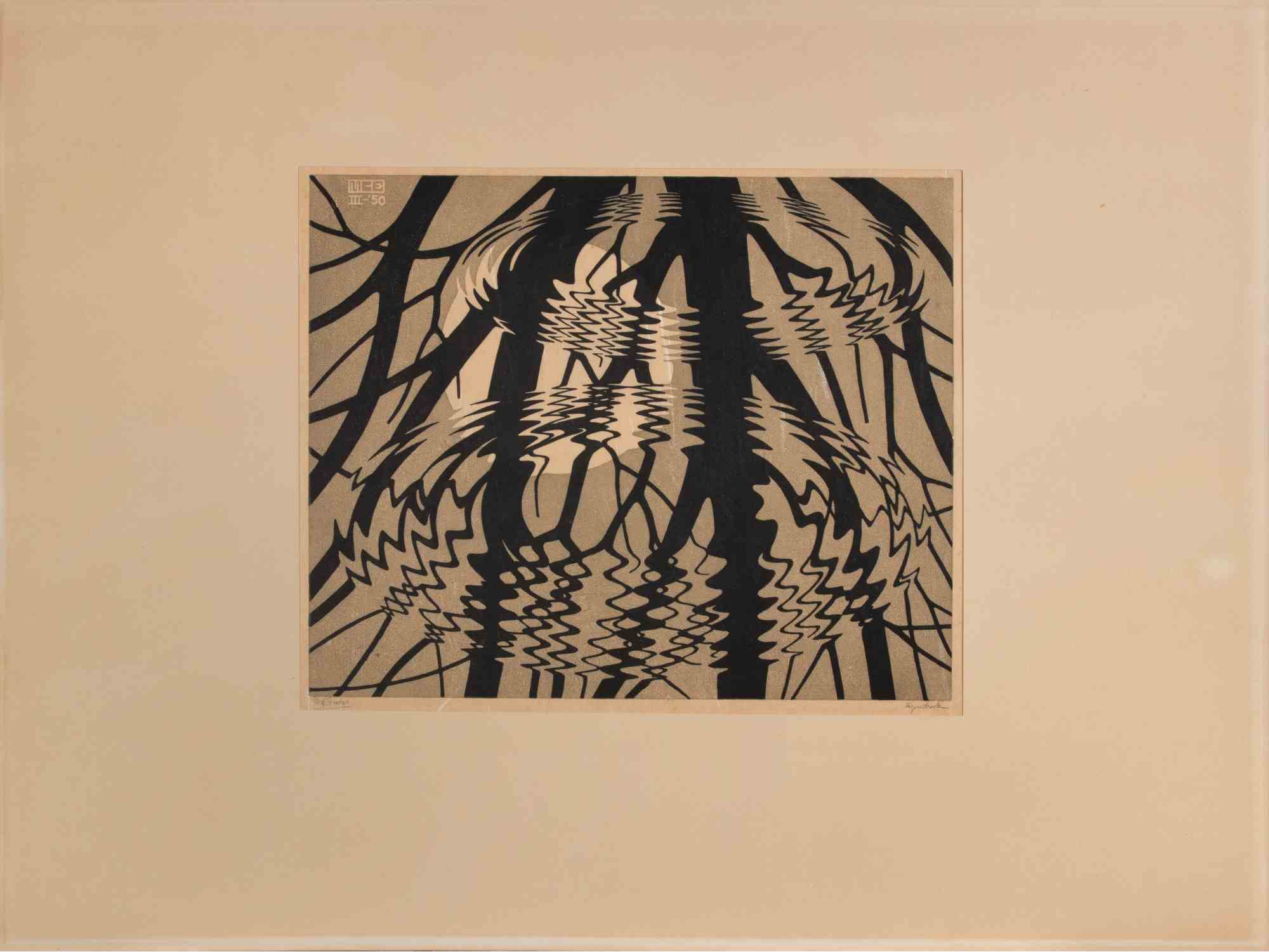
Rippled Surface
Maurits Cornelis Escher
Linocut
38000€

